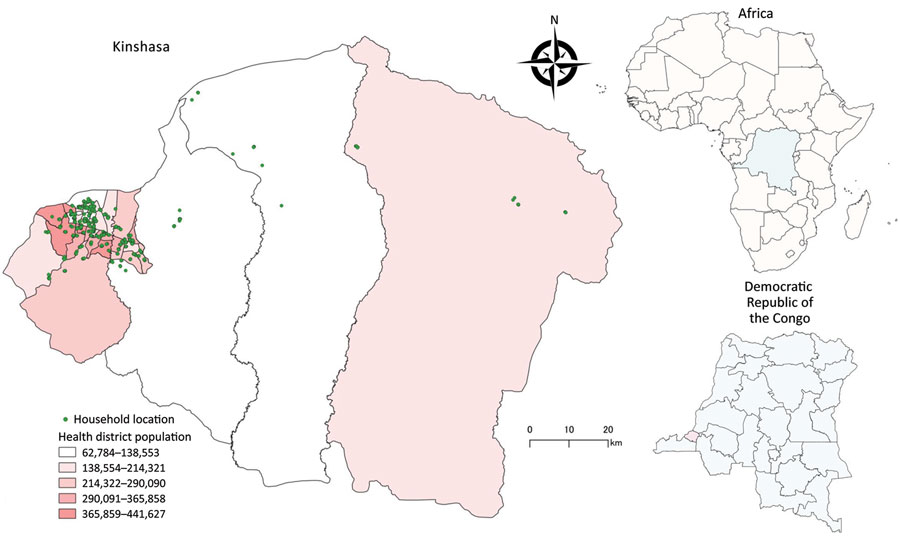Volume 29, Number 1—January 2023
Research
High SARS-CoV-2 Seroprevalence after Second COVID-19 Wave (October 2020–April 2021), Democratic Republic of the Congo
Figure 1

Figure 1. Study area for prospective, population-based, cross-sectional study to ascertain the cumulative population SARS-CoV-2 exposure in Kinshasa, Democratic Republic of the Congo, after the second wave of SARS-CoV-2. Inset maps show location of Kinshasa in Democratic Republic of the Congo (pink shading) and Democratic Republic of the Congo in Africa (blue shading).
Page created: November 15, 2022
Page updated: December 21, 2022
Page reviewed: December 21, 2022
The conclusions, findings, and opinions expressed by authors contributing to this journal do not necessarily reflect the official position of the U.S. Department of Health and Human Services, the Public Health Service, the Centers for Disease Control and Prevention, or the authors' affiliated institutions. Use of trade names is for identification only and does not imply endorsement by any of the groups named above.